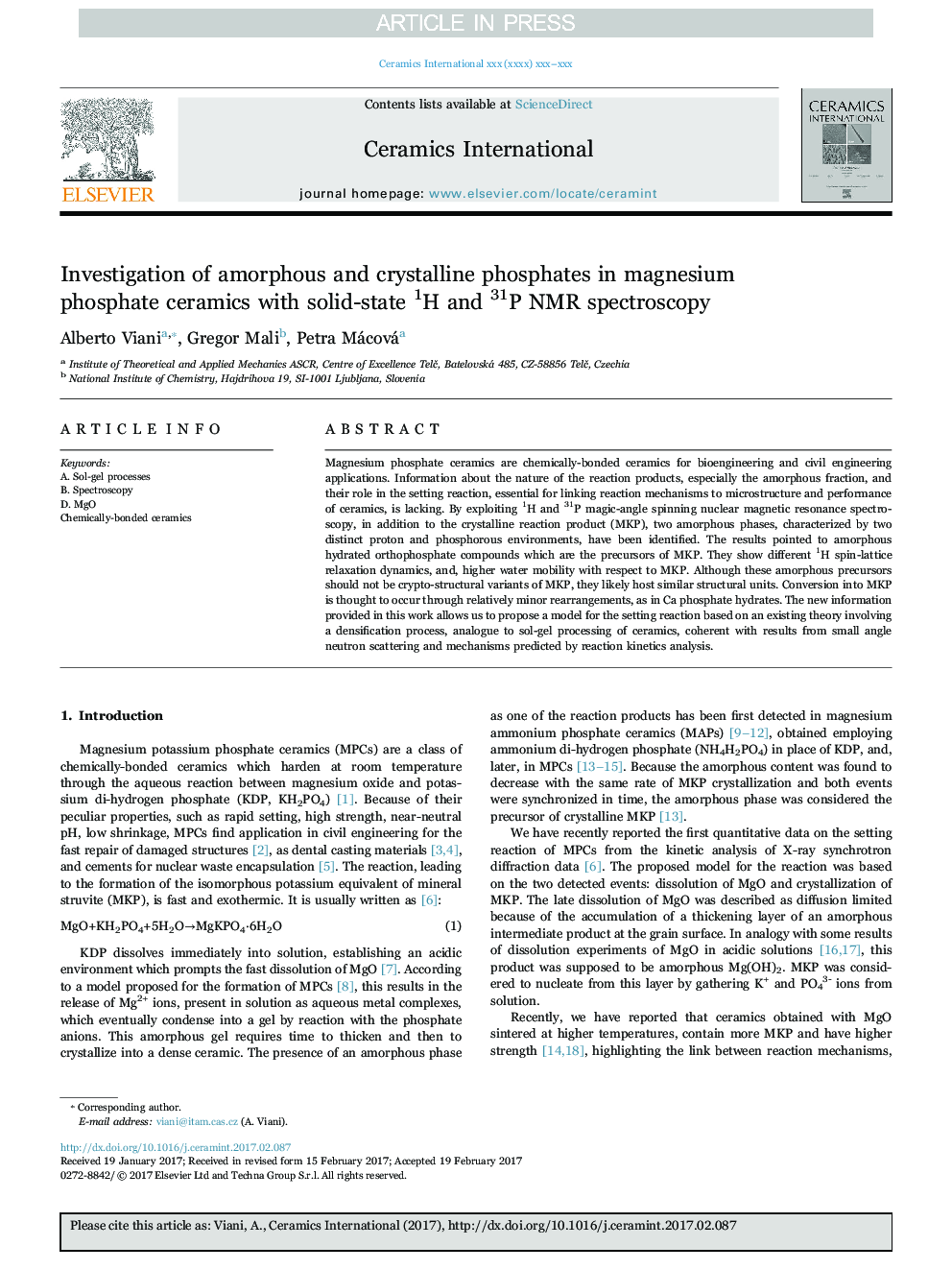| Article ID | Journal | Published Year | Pages | File Type |
|---|---|---|---|---|
| 5438509 | Ceramics International | 2017 | 9 Pages |
Abstract
Magnesium phosphate ceramics are chemically-bonded ceramics for bioengineering and civil engineering applications. Information about the nature of the reaction products, especially the amorphous fraction, and their role in the setting reaction, essential for linking reaction mechanisms to microstructure and performance of ceramics, is lacking. By exploiting 1H and 31P magic-angle spinning nuclear magnetic resonance spectroscopy, in addition to the crystalline reaction product (MKP), two amorphous phases, characterized by two distinct proton and phosphorous environments, have been identified. The results pointed to amorphous hydrated orthophosphate compounds which are the precursors of MKP. They show different 1H spin-lattice relaxation dynamics, and, higher water mobility with respect to MKP. Although these amorphous precursors should not be crypto-structural variants of MKP, they likely host similar structural units. Conversion into MKP is thought to occur through relatively minor rearrangements, as in Ca phosphate hydrates. The new information provided in this work allows us to propose a model for the setting reaction based on an existing theory involving a densification process, analogue to sol-gel processing of ceramics, coherent with results from small angle neutron scattering and mechanisms predicted by reaction kinetics analysis.
Related Topics
Physical Sciences and Engineering
Materials Science
Ceramics and Composites
Authors
Alberto Viani, Gregor Mali, Petra Mácová,
